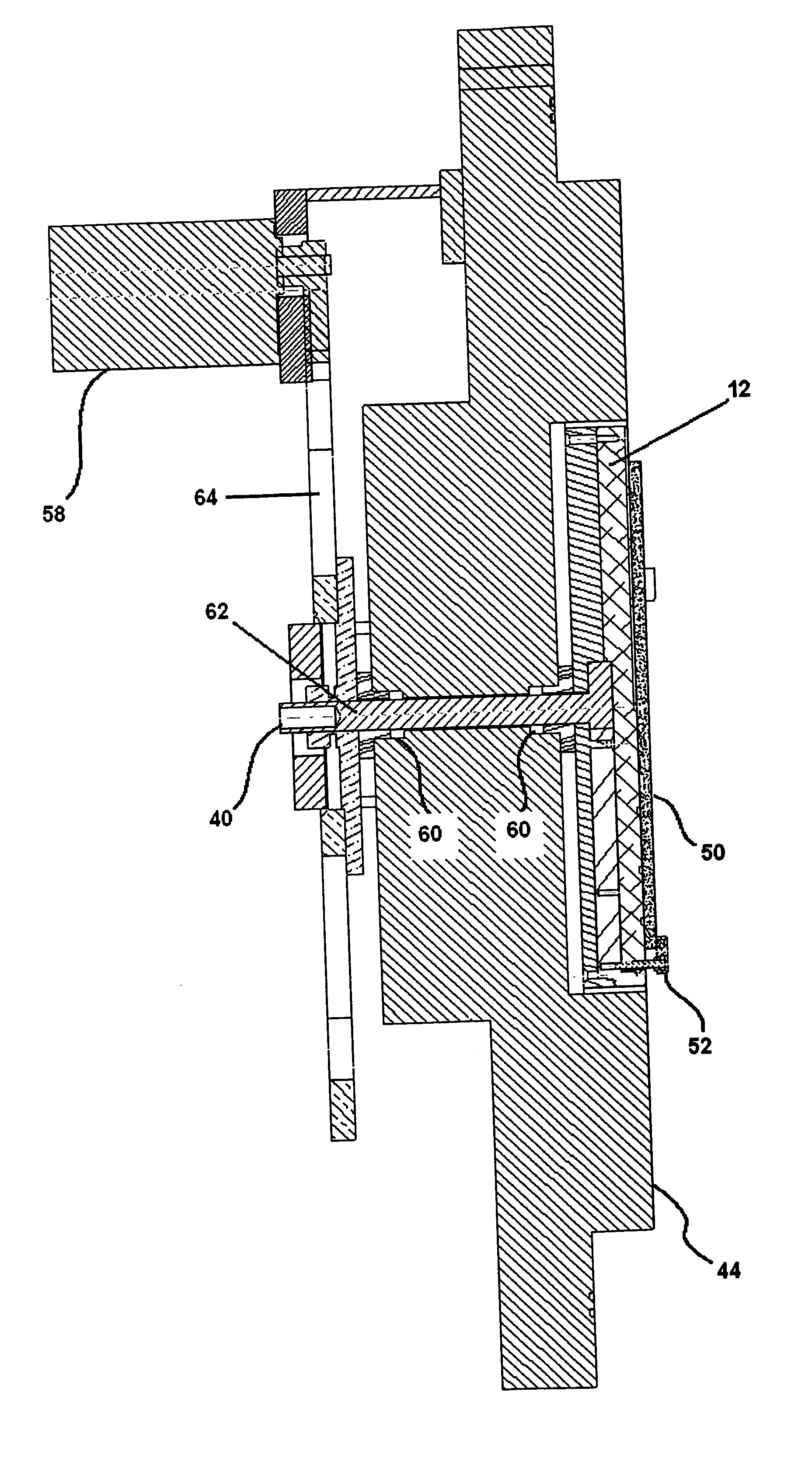Dynamic profile anode
a dynamic profile and anode technology, applied in the field of apparatus and, can solve the problems of insufficient control of the deposition process, inferior to a metallic ion source, and easy variation of operating geometries and other parameters of the cell, so as to achieve constant surface profile and minimize contamination
- Summary
- Abstract
- Description
- Claims
- Application Information
AI Technical Summary
Benefits of technology
Problems solved by technology
Method used
Image
Examples
Embodiment Construction
)
[0055] The present invention is of an apparatus and method for highly controlled electrodeposition, particularly useful for electroplating submicron structures. Enhanced control of the process provides for a more uniform deposit thickness over the entire substrate, and permits reliable plating of submicron features, for example those on a semiconductor wafer. A primary advantage of the invention is that the kinetics of the cell, which are based on the geometries of the cell, can be changed quickly to optimize plating on the substrate surface, for all deposits including very thick film deposits and thin film deposits.
[0056] As used throughout the specification and claims, “substrate” means any substrate, wafer, lens, panel, and the like, or any other item which is to be attached to an electrode to be plated. Such substrate may comprise any material such as a semiconductor, including but not limited to silicon, gallium arsenide, sapphire, glass, ceramic, metal alloy, polymer, or pho...
PUM
| Property | Measurement | Unit |
|---|---|---|
| Thickness | aaaaa | aaaaa |
| Shape | aaaaa | aaaaa |
| Electrical conductor | aaaaa | aaaaa |
Abstract
Description
Claims
Application Information
 Login to View More
Login to View More - R&D
- Intellectual Property
- Life Sciences
- Materials
- Tech Scout
- Unparalleled Data Quality
- Higher Quality Content
- 60% Fewer Hallucinations
Browse by: Latest US Patents, China's latest patents, Technical Efficacy Thesaurus, Application Domain, Technology Topic, Popular Technical Reports.
© 2025 PatSnap. All rights reserved.Legal|Privacy policy|Modern Slavery Act Transparency Statement|Sitemap|About US| Contact US: help@patsnap.com



